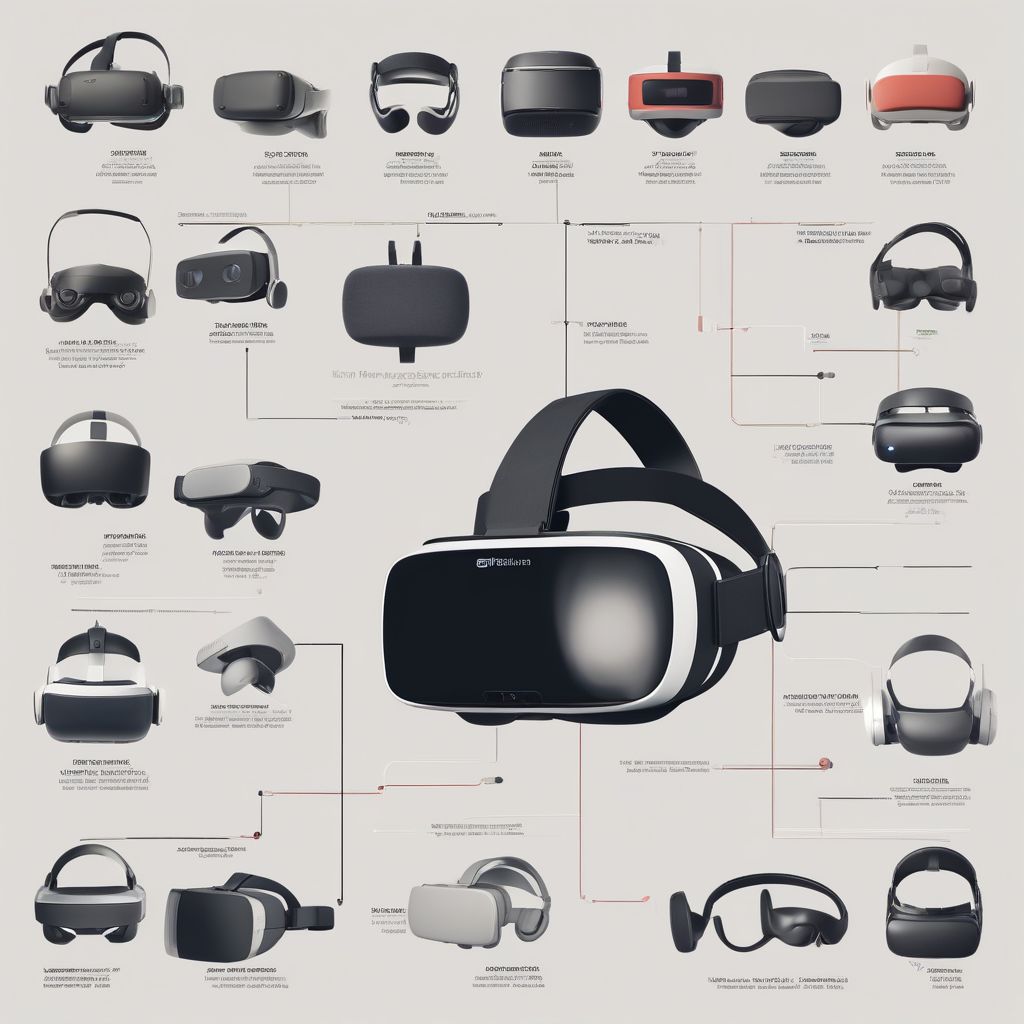Imagine stepping into a world so real, you could almost taste the digital rain on your tongue. That’s the promise of virtual reality, and it all hinges on one crucial element: the display.
Early VR headsets, while ambitious, often left users feeling like they were peering through a screen door at a distant world. Pixelation was rampant, screen-door effect was unavoidable, and the overall experience could be, well, less than immersive. But oh, how times have changed!
A Resolution Revolution: Why Pixels Matter in VR
The evolution of VR displays is a story of relentless pursuit of one thing: resolution. Why is it so important? Let’s break it down:
- Immersion: Higher resolution means more pixels crammed into that screen strapped to your face. More pixels equal sharper images, reduced screen-door effect (those pesky black lines between pixels), and a significantly more believable virtual world.
- Comfort: Remember those early VR headaches? Low resolution played a big part. Our brains struggle to process blurry images, leading to eye strain and discomfort. Higher resolution reduces this strain, allowing for longer, more enjoyable VR sessions.
- Realism: As resolution increases, so does the fidelity of virtual objects. Textures become crisper, details sharper, and suddenly, that virtual cityscape doesn’t look like it was built from digital Legos.
From Blurry Beginnings to Crystal-Clear Clarity: A Timeline of VR Display Advancements
The journey from pixelated nightmares to near-retinal perfection has been remarkable. Let’s take a trip down memory lane:
1. The Early Days (1990s – Early 2000s): Think chunky headsets, nausea-inducing refresh rates, and resolutions so low you could practically count the pixels. These were the pioneering days, and while the technology was in its infancy, it planted the seeds for what was to come.
2. The Rise of Consumer VR (2010s): The Oculus Rift and HTC Vive ushered in a new era of consumer-grade VR. Resolutions saw a significant jump, and suddenly, virtual worlds were starting to look a whole lot more inviting.
3. The Pursuit of Perfection (Today): Fast forward to today, and we’re talking 4K and even 8K resolutions in headsets like the Varjo Aero and Pimax 8KX. These high-end devices are pushing the boundaries of visual fidelity, blurring the lines between the digital and real world like never before.
 Evolution of VR headsets
Evolution of VR headsets
The Future is Looking Sharp: What’s Next for VR Displays?
The quest for ultimate immersion is far from over. Here’s a glimpse at the exciting advancements on the horizon:
- Even Higher Resolutions: Get ready for 12K and even 16K displays. These ultra-high resolutions will bring us closer than ever to the limits of human perception.
- Foveated Rendering: This clever technique tracks your eye movements and renders the area you’re focusing on in higher detail. This not only enhances visual fidelity but also improves performance by reducing the processing power needed to render the entire scene.
- MicroLED and OLED Displays: These technologies offer improved contrast ratios, deeper blacks, and more vibrant colors, further enhancing the realism of virtual environments.
The Impact of Crystal-Clear VR: Beyond Gaming
While gaming has undoubtedly been the driving force behind VR display advancements, the applications extend far beyond entertainment:
- Healthcare: Surgeons can use VR to plan complex procedures, and medical students can train on virtual patients without the risk of real-world consequences.
- Engineering and Design: From prototyping cars to designing buildings, VR allows professionals to visualize and interact with their creations in immersive 3D.
- Education and Training: Imagine learning history by walking through ancient Rome or exploring the human body from the inside out. VR has the potential to revolutionize how we learn and experience the world around us.
Conclusion: Stepping into the Future, One Pixel at a Time
The evolution of VR displays is a testament to human ingenuity and our relentless pursuit of technological advancement. From those early, blurry beginnings, we’ve come a long way, and the future is looking sharper than ever.
As resolutions continue to soar and display technologies evolve, the line between the real and virtual worlds will continue to blur. This opens up a world of possibilities, limited only by our imagination. So, buckle up, because the future of VR is going to be one incredible ride.
Now, tell me, what virtual experience are you most excited to see come to life in stunning, crystal-clear resolution?
[amazon bestseller=”VR headsets”]
